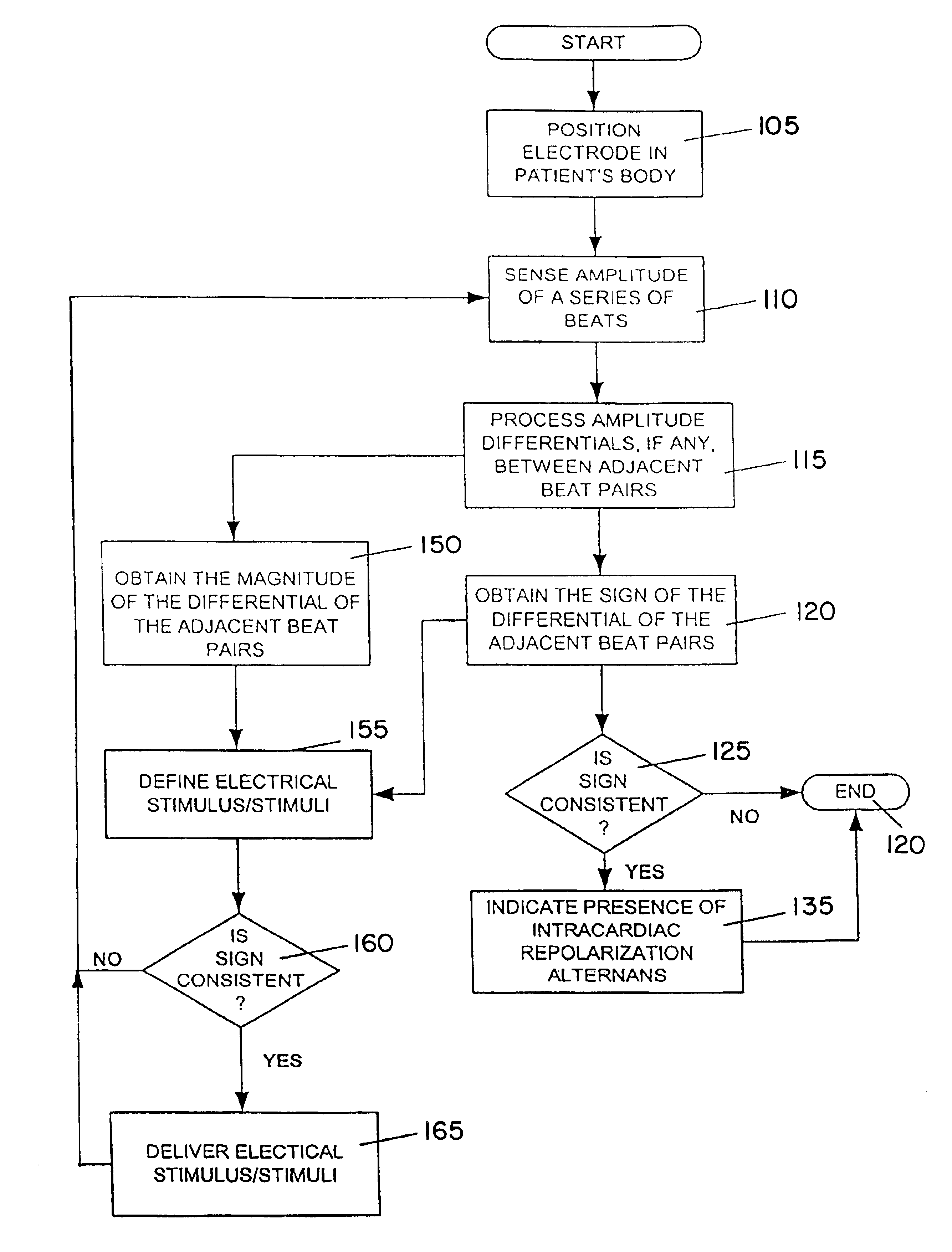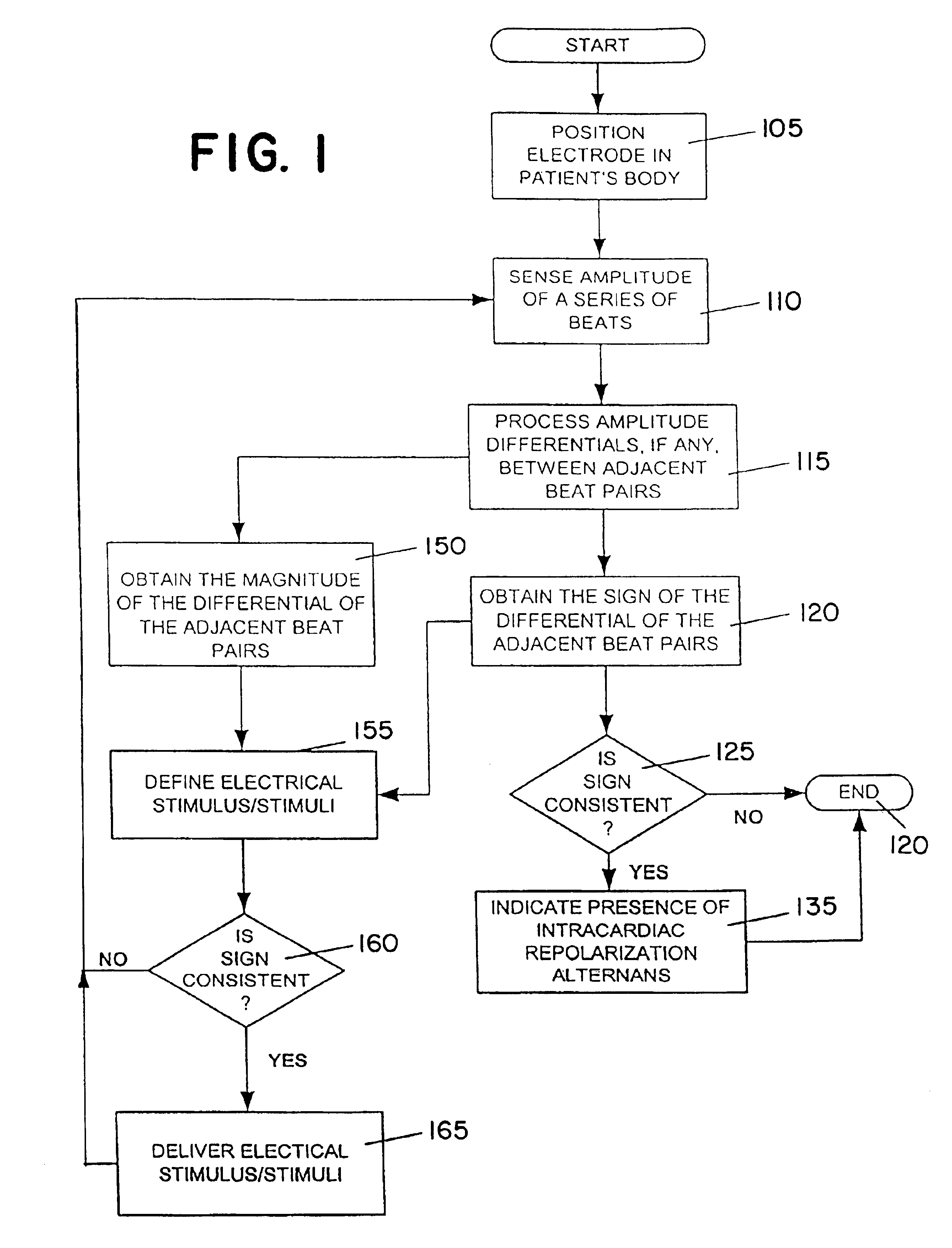Intracardiac detection and control of repolarization alternans
a technology of repolarization alternans and detection and control, applied in the field of intracardiac detection and control of repolarization alternans, can solve the problems of threatening arrhythmias, irregular irregular behavior, and inability to predict long-term, so as to prevent the onset of potentially deadly arrhythmias and rapid detection
- Summary
- Abstract
- Description
- Claims
- Application Information
AI Technical Summary
Benefits of technology
Problems solved by technology
Method used
Image
Examples
case study 1
[0040
[0041]A 27-year old female patient was evaluated for the presence of repolarization alternans during a clinically-indicated electrophysiology study. Repolarization alternans assessment was performed using: (i) standard surface electrocardiogram (ECG) detection of microvolt T-wave alternans (by the Cambridge Heart CH2000 system) and (ii) intracardiac electrogram acquisition and analysis.
[0042]Two distinct stages were studied. The first stage (150 seconds duration) was recorded at rest, i.e., with no electrical pacing. During the second stage (293 seconds duration), the heart was stimulated at a cycle length of 550 ms (109 beats per minute).
[0043]Representative segments of the intracardiac electrograms are shown in FIGS. 2A-2B (resting stage) and 3A-3B (550 ms pacing stage). The electrograms shown in FIGS. 2A and 3A are bipolar recordings from an electrode located at the right ventricular apex. The electrograms shown in FIGS. 2B and 3B are unipolar recordings from the right ventr...
case study 2
[0056
[0057]As a standard component of their routine, clinically-indicated electrophysiological studies, 21 patients (16M, 5F; 6216yr) were evaluated for the presence of repolarization alternans (See the table in FIGS. 7A and 7B for patient demographics). The electrophysiologic studies were performed using standard techniques, which included the introduction of three percutaneous catheters (6F quadripolar catheters with 5-mm interelectrode spacing; Bard EP, Billerica, Mass.) from the femoral veins to pace and record endocardial signals from the right atrium, His-bundle region, and right ventricle (RV). Electrophysiological testing used: (i) single, double, and triple ventricular extrastimuli at two drive cycles from two right ventricular sites and from one right ventricular site during isoproterenol or dobutamine infusion, and (ii) rapid ventricular pacing. Inducibility of monomorphic ventricular tachycardia required uniform twelve-lead tachycardia morphology, regardless of cycle len...
PUM
 Login to View More
Login to View More Abstract
Description
Claims
Application Information
 Login to View More
Login to View More - R&D
- Intellectual Property
- Life Sciences
- Materials
- Tech Scout
- Unparalleled Data Quality
- Higher Quality Content
- 60% Fewer Hallucinations
Browse by: Latest US Patents, China's latest patents, Technical Efficacy Thesaurus, Application Domain, Technology Topic, Popular Technical Reports.
© 2025 PatSnap. All rights reserved.Legal|Privacy policy|Modern Slavery Act Transparency Statement|Sitemap|About US| Contact US: help@patsnap.com



